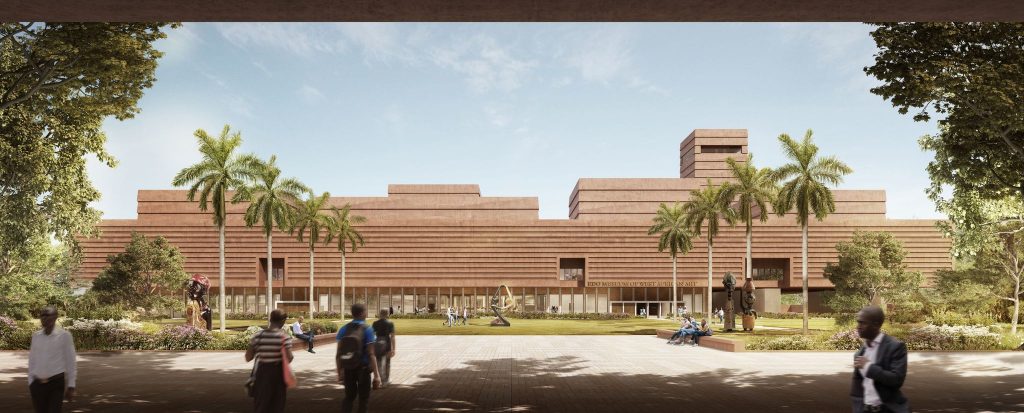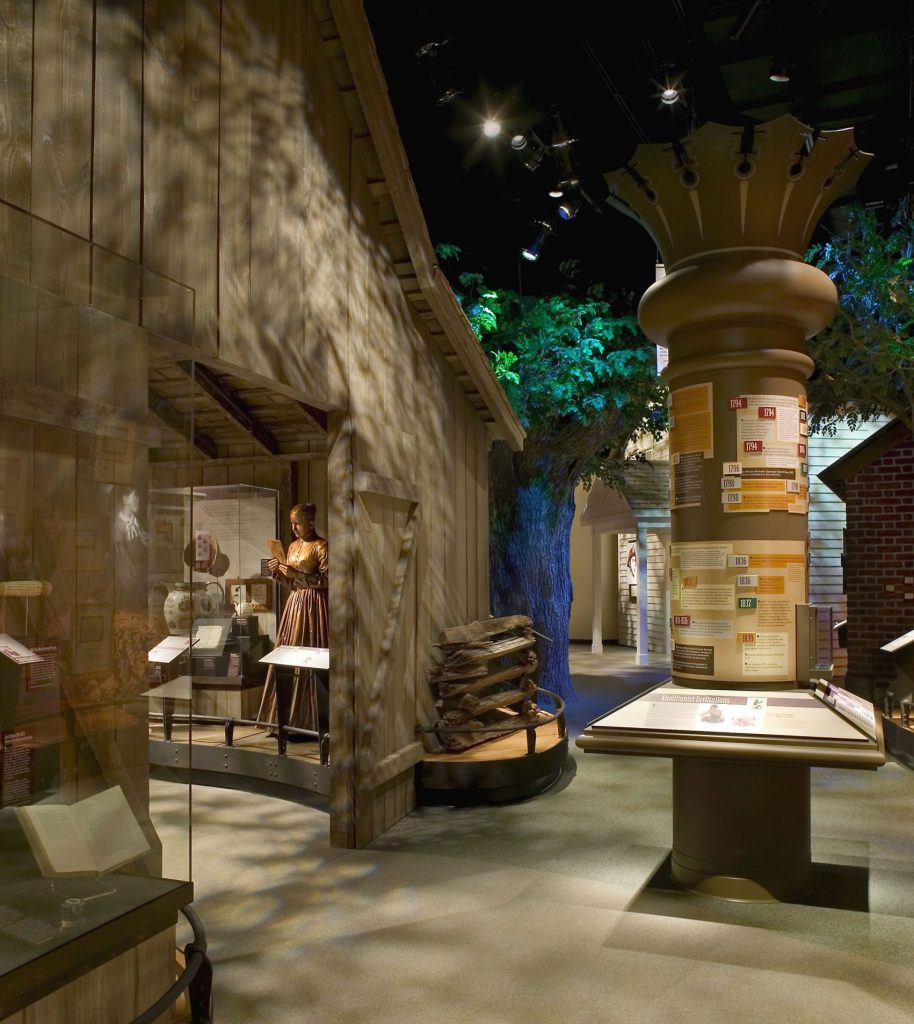Enjoy this article?
Most Museums Journal content is only available to members. Join the MA to get full access to the latest thinking and trends from across the sector, case studies and best practice advice.

Establishing an African diaspora museum in the UK requires a multi-way approach. This should be informed by reflections on the past, responsiveness to the lived realities of the communities in focus, and consideration of alternative future possibilities for creating a space that serves the needs and aspirations of a diverse, inter-generational spectrum of stakeholders.
It is particularly important to conceptualise new imaginings of museum space within the UK context because of the imperialist foundations on which collection-based cultural institutions in western Europe are founded. Although the 19th century was once heralded as a “golden age” for museum-building in the west, it was also the period that witnessed racist ideologies and the acquisition of colonially sourced collections.
The default practices of museums established in Victorian times were to present the cultural and scientific achievements of African-descended people as marginal or “other” to the histories and creative outputs of white European elites, centred as an idealised norm. So it’s unsurprising that negative legacies of that troubled history continue to position and narrate Blackness in Europe as otherness.
A new national museum centred on African diaspora histories and cultural heritage offers an alternative methodology to decide on the location, design features, collections, research objectives and public engagement programmes. At each stage, collaborative co-production of knowledge with a network of national and international partners is advocated, along with the proposal to take a decolonial approach to the education and participation strands of the museum’s work.
The significant lack of diversity in the staffing and governance of the UK’s publicly funded museums – as well as in their audiences – has meant the histories, life stories and cultural outputs of Britons with African heritage seldom feature prominently in the exhibition spaces of high-profile national institutions.
A dedicated museum of the UK’s African diaspora would not find itself in the same position of restricting certain histories to a time-limited, calendar-based schedule of Black History Month events, or the occasional commemorative anniversary acknowledging the achievements of a notable person of colour or Black collective. Given that the African presence in the UK dates to the Roman era, a reimagining of how we research, curate and present narratives about Britain’s multicultural heritage will disrupt the status quo.
Decolonial perspectives on collection development, narrative (re-)interpretation and exhibiting practice are paramount when considering the new museum’s underlying principles. Historians, curators, documentarians and artists drawn from the global south, as well as people of colour engaged in these creative outputs from diaspora communities in the global north, represent an important community of experts whose perspectives on decolonising museums should inform the initial policymaking and strategic planning.
For example, the African philosophy of “ubuntu” – based on the relational premise “I am, because we are” – underpins the decolonial practice of Botswanan indigenous education scholar Bagele Chilisa, and the inclusive teaching and learning approaches she advocates could inform the design of the museum’s education strategy.
Similarly, the Africa-facing artistic and curatorial learning methods researched by the late Nigerian curator Olabisi “Bisi” Silva represent contemporary theoretical and practitioner-based expertise of considerable value.

The more diverse the planning teams and consultation networks involved in creating blueprints for the museum’s development, the greater the likelihood of achieving a space and service delivery outputs that are reflective of and responsive to African diaspora communities’ expectations and aspirations, and wider audiences interested in learning about multicultural Britain.
A “hub-and-spoke” network of institutions – comprising a national site and several satellites across the UK – provides the optimal framework for creating an inclusive museum. Ideally, they would be located in areas of the UK with long-established African diaspora communities.
A radial network of affiliated venues would also enable major exhibitions and holdings within the national collection to tour and rotate around the regional nodes, allowing a broader distribution of localised populations to access the museum’s exhibition and education programmes.
Collaborations with leading charities and architecture firms committed to widening access to careers in architecture for under-represented groups – including the Stephen Lawrence Day Foundation and Adjaye Associates – could also be established to enable aspiring architects from African diaspora communities to submit proposals to create a new building or renovate existing structures as part of social and environmental regeneration initiatives in urban areas.
Mainstream museum services still tend to reference enslavement as the point of departure for discussing the early Black presence in the UK, then jump to the Windrush generation – as though nothing existed before, between or after these periods to encompass the breadth of African diaspora histories connected to this nation. By presenting more thematic, internationally contextualised narratives that articulate the longstanding interdependencies that have linked Great Britain and Northern Ireland to the wider world, we would avoid the hitherto inaccurate chronologising of African diaspora histories.
The organisational structures and track records of Black-led heritage spaces and museums provide tried-and-tested development models for designing an African diaspora museum in the UK.
For example, the Berlin-based arts space and research centre, Savvy Contemporary, founded by the Cameroonian curator and writer Bonaventure Soh Bejeng Ndikung, combines exhibition and performance spaces, research resources and meeting rooms to support engagement in aesthetic and art-political dialogues about cultural exchange.
The African-American artist and philanthropist Kehinde Wiley’s Black Rock Studio in Senegal, and the Zoma Museum in Addis Ababa, founded by the Ethiopian curator Meskerem Assegued and Addis-born artist and writer Elias Sime, also represent examples of recently established cultural spaces built in Africa. They support communities of cultural producers from the continent and the diaspora, while encouraging creatively experimental forms of knowledge production, and the galleries are open to the public.

Creating an inclusive museum space focused on African diaspora histories and heritage in the UK requires the laying of conceptual foundations that work positively with the complex, fragmented histories and cultural hybridity of communities connected to the wider world, largely as a result of flows of people, cultural objects and systems of knowledge spanning millennia. The consultation and development processes that follow must go against the grain of established museum practices, to propose new approaches to acquisition, interpretation, curation and display.
It is an opportunity to apply radically different, dynamic museum design and practice centred on cross-cultural and decolonial dialogues. Ultimately, the planning teams, consultation facilitators and stakeholder communities involved in the museum’s inception should aim to create a space of welcome and creative learning for everyone who crosses the threshold, which simultaneously serves for some as a place of recognition, acceptance, wellbeing and healing.
By respectfully honouring ancestral memories, encouraging polyvocal conversations and curating content that opens up the freedom for diasporans of colour to see and be ourselves – without limitations – an African diaspora museum in the UK might one day also signify a sense of home.
Dr Carol Ann Dixon is a cultural geographer in the University of Sheffield’s department of geography, whose research addresses Caribbean social history and cultural heritage
When you work in the museum sector for a while, it’s incredible how ambivalent you get to things. You adapt to the casual racism and the offensive labelling, the dehumanising approach to “world collections” and the general sense that as a Black person, you are not welcome in this space.
I can’t tell you how many times I have encountered what seems to be “innocent” or “accidental” racism within museums. It is often the result of sloppy interpretation or incorrect labelling, but that doesn’t make it hurt less. As we all know, museums and their staff choose what goes on display.
In reality, there is nothing “innocent” or “accidental” about this racism. It’s just racism. I once saw that someone had decided it would be appropriate to include a golliwog in a case of children’s toys. If they were going to talk about how insidious racism is, that it can even sneak into children’s toys, then that would be interesting. But there was no label, no context.
I’ve often wondered whether a Black British Museum, an equivalent to the African-American museums in the US, could be a positive solution to the issues around representation within museums.

At first, I thought these might be detrimental, essentially splitting British history up into separate sites based on race, and given how underfunded a lot of museums in this country are, would adding another one be of any benefit? But then I looked at how poorly museums engage with and represent Black stories and Black histories across the country, and now I think it’s absolutely vital.
There is precedence in other sectors. In publishing, there are organisations such as the Good Literary Agency, which seeks to represent the voices of people from under-represented backgrounds who haven’t had their chance to put their written work in the spotlight.
In theatre, companies such as Talawa and Tiata Fahodzi champion Black voices, leaders and writers by showcasing their work. Yet there is nothing like this in the museum sector. There are no museums that exclusively focus on the Black story, despite the significant contribution to the history of Britain. The closest we have is the Black Cultural Archives, a wonderful space for sure, but one that functions in a very different way from museums.
This is why we need a Black British Museum. Black people currently aren’t safe in many museums across the country, and this “accidental” racism isn’t going away any time soon. To go one step further, with the government deciding to retain and explain the legacy of slave traders, Black people aren’t even safe in the public realm.
It’s time we put Black people in charge of describing, presenting and reflecting on our histories.
It’s time we had a Black British Museum.
Most Museums Journal content is only available to members. Join the MA to get full access to the latest thinking and trends from across the sector, case studies and best practice advice.